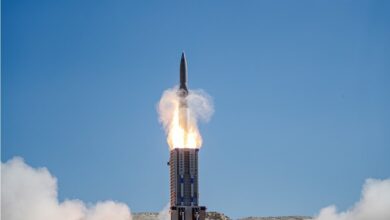US Missile Defense, Boeing Demonstrate Missile Interceptor
The US Missile Defense Agency (MDA) and Boeing have announced the successful demonstration of an advanced interceptor capability for the Ground-based Midcourse Defense (GMD) system.
The development of the new capability for the GMD system is part of the Life Extension Program to modernize and equip the military with updated technology to combat missile threats.
The GMD system is designed to defend the US from long-range intercontinental ballistic missile threats. In the test, a Ground-Based Interceptor (GBI) was launched into space with a three-stage booster in two-stage mode. This allowed the GBI to intercept a missile earlier than previous models.
The new GMD capability relies on digital system modeling software upgrades, allowing operators to choose between digital system modeling software upgrades in real-time based on the speed and distance of the perceived threat. The stage mode then determines the moment the kill vehicle will be launched from the GBI.
About The GMD System
The GMD is a global system that serves as the homeland missile defense system for the entire United States. The system is meant to protect all 50 states from a limited long-range ballistic missile attack.
As of 2021, there are a total of 44 GBIs deployed.
How The GMD Works
Once the GMD system detects an incoming missile attack, the system sensor sends data to the GMD fire control system, and GBIs are then launched based on the specifics of the threat.
The GBIs then fly in the direction of the missile. It uses an onboard sensor to track the missile and physically collide with it, releasing an Exoatmospheric Kill Vehicle, eliminating the warhead.












